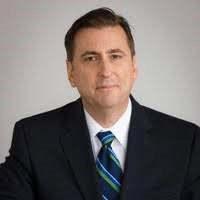
An interview with Kerim Koseoglu, Director at PMA Houston
Kerim Koseoglu is an accomplished program management professional with extensive international and domestic infrastructure project experience. He has a history of successful program/project/strategic planning, delivery of quality, abbreviated schedule compliance, and cost-constrained technical infrastructure projects in high-pressure environments. Kerim has been with PMA since 2022 and is currently the director for the Houston office.
What key challenges have you encountered when managing technical projects, and how have you overcome them to meet your clients’ expectations?
There are two categories of stakeholders: the management of the company and the actual users of the facility. The management stakeholders will have a vision and a budget in mind. If you focus only on their goals, you might meet their schedule and budget, but the most critical factor is that the facility functions for the end users. If you have not considered what they do on a day-to-day basis, they end up with a new facility that’s not effective.
Managing expectations and change management is also key. Clients may have a broad idea of the end product, but they may not have a good understanding of the time or cost of the project, and in turn, scope of work. If the scope is not well-defined, major changes will occur as the project progresses, significantly disrupting cost and schedule. And if you don’t deliver on time and budget, the stakeholder will blame you. Defining the scope of work from day one, and controlling changes and expectations is imperative.
Can you share specific examples of projects you’ve managed, including their scope, scale, and the strategies you employed to ensure they were delivered on time and within budget?
I’ve been very fortunate in my career to work on a very eclectic portfolio of projects and project types, comprising oil and gas, universities, data centers, and even downstream industrial plants.
Large-scale projects, such as refineries and chemical plants, require careful attention to stringent requirements, design considerations, and material selection. The ability to handle large equipment, especially in preexisting facilities with tight spaces, is a game-changer as are a well-defined scope of work and planning for the storage and handling of long-lead items.

As an OPM, what are the typical milestones and critical phases in a technical project that you pay special attention to, and how do you ensure they are executed smoothly?
Every major transition point is important, from the mobilization of the project to the front-end engineering design work. Project gates, stipulated by the client or aligned with PMI best practices, are pivotal. These gates have specific financial controls, and issues can lead to project cancellations or delays.
Even if a project is 60% complete on schedule and on budget, a change in the organization’s finances can alter the project’s course, so finance departments must be informed throughout the project to avoid sudden impactful decisions. Clients may cancel a project due to economic downturns or changes in industry trends. The ability to recognize these factors, adapt, and present cost estimates for completion versus cancellation becomes vital in these situations.
A win-win-win philosophy for design, owner, and builder collaboration creates mutual success. Avoiding adversarial situations in contracts and negotiations fosters a positive project environment. Adversarial conditions mandate change management and control, emphasizing the importance of collaborative approaches.
In your experience, what are the key trends and emerging technologies in the technical project management field, and how do you stay up to date with these developments to benefit your clients?
We recently conducted a fascinating Critical Path Workshop with Dr. Gui. It’s refreshing to see a company acknowledging that just because a method has been in use for the past 60 years doesn’t make it flawless. Recognizing the need for major improvements is vital, and I admire PMA’s commitment to continuously improving industry standards.
In terms of trends, I always seek process improvement. I disagree with the notion of “if it’s not broke, don’t fix it.” Everything can be enhanced.
Exploring the potential of AI (Artificial Intelligence) in scheduling is a notable trend. I’m actively collaborating with PMA’s knowledge center to understand how AI can benefit and improve scheduling processes.
Another significant trend is the shift in business models. Companies are exploring collaborative approaches and moving away from adversarial contract structures, creating a win-win situation, minimizing concerns, and exposing everyone to a more efficient and beneficial project delivery process.
I also observe a trend towards pre-negotiated agreements with service and equipment providers. Establishing preferred vendor lists and partnership agreements with architects, manufacturers, and suppliers before starting projects is a time-saving and hassle-free approach.
The EPC world, particularly in Houston, has substantially consolidated over the past 15 years. Companies have been acquired or merged due to increased global services market prices and operating costs, leading to a decrease in the number of capable/viable companies available for project execution.
Breaking this downward spiral requires a fundamental shift towards a trust-based, win-win structure. Changing the traditional adversarial approach to collaboration will revitalize the industry.
Can you provide a success story highlighting your ability to navigate the complexities of a technical project and deliver exceptional results for a client?
In my experience with large international projects, I dealt with the complexity of involving multiple conglomerate companies and various governments. Aligning different entities and addressing technological disparities in the tactical staff were significant challenges that required strategic solutions.
To overcome these challenges, I emphasized collaboration among all parties. Bridging the technological gap in the client’s tactical staff became a priority in the project.
On the technical side, I stressed a comprehensive understanding of the technologies, processes, and expected outcomes. I firmly disagreed with the notion that any certified project manager could handle any project, especially in cases like nuclear power plants that demand specialized expertise.
Regarding risk management, I highlighted the significance of identifying and addressing risks upfront to prevent claims. I observed that claims often arise due to a failure to manage risks, emphasizing the need for effective communication to prevent potential issues.
Soft skills, particularly communication and the ability to influence decision-makers, played a key role in navigating these complex projects. Successful communication with project stakeholders proved essential in avoiding delays and cost overruns.
In conclusion, my experience emphasized the importance of understanding project fundamentals, effective communication, and proactive risk management to ensure the success of large-scale international projects.

Can you share your approach to fostering long-term client relationships and consistently meeting client needs?
Earning trust is fundamental in project management. If you can establish reliability – consistently providing great service– you can become the indispensable go-to and continue to work with a good client. When clients have multiple bidders for a project, being on their list due to an established excellent reputation is so advantageous.
Soft skills play a significant role allowing project managers to connect with clients, both at the management and operational levels, to establish those relationships. Addressing and minimizing mistakes allows us to maintain trust to establish a foundation for future collaborations.
How do you position yourself as a trusted advisor and owner’s representative (OPM) for clients seeking to deliver new facilities on schedule and budget?
I leverage PMA’s historical delivery methods and capabilities, showcasing past successes and client base. Marketing and sales efforts require emphasizing our goal to help clients succeed. We convey that our success means their success, making them understand how PMA’s success can benefit them. Building a long-term client-service provider relationship is the ultimate goal.
Key points include emphasizing schedule and budget. PMA excels in scheduling and risk estimation, providing accurate owner’s estimates. Many projects suffer due to unrealistic expectations from inaccurate initial estimates, usually on the low side. Aligning expectations correctly is crucial for success.
The client must recognize that your company can deliver on schedule and within budget. Trust is the cornerstone of this relationship.
How do you approach procurement for technical and financial requirements in complex technical projects, and what strategies do you employ to ensure efficient and cost-effective procurement?
I break procurement into two components: services, whether it be engineering or consulting services, and material/equipment.
For professional services, I recommend separating technical qualifications from pricing. Evaluate the technical qualifications first; only then open the financial bids of the qualified ones for an apples-to-apples comparison. When dealing with smaller projects and an insufficient number of vendors, a proper company estimate provides a point of comparison.
There’s a trend in major corporations stipulating large penalties for schedule delays. A more effective approach is a contract with a cost savings clause where all parties (architect, engineer, company, owner, and general contractor) have a stake in the project’s outcome.
For materials and equipment procurement, identify long-lead items early, especially for technical facilities. These items often have waiting lists, and delays can impact the project schedule. Consider delivery logistics, including customs controls, especially in countries with restrictions. Mastering these details is essential for a successful project.